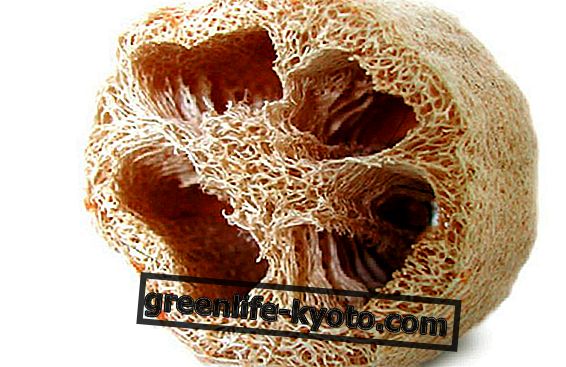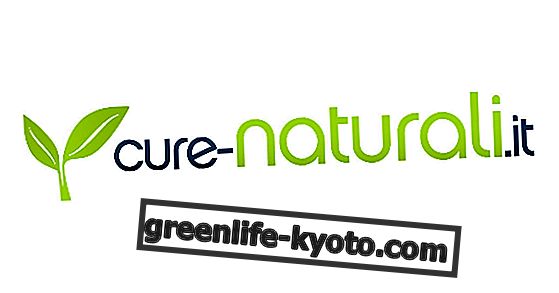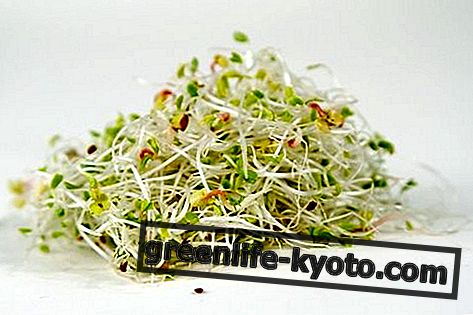
The skin is one of the excretory organs, through which we eliminate waste and toxins, and constitutes the immediately perceptible indicator of our general state of health. Air pollution in cities, solar radiation, stressful life, tiredness and poor quality of sleep can put a strain on its natural defenses.
In particular, in winter the skin needs specific treatments capable of protecting it from low temperatures and atmospheric agents; and at the same time it needs to be hydrated and nourished with natural remedies, able to restore the hydrolipidic layer that covers it. Let's see how to protect the skin with natural remedies.
The skin and its functions
The skin performs numerous and very important functions:
- Protective function: protects against trauma, ultraviolet radiation, infections and chemical agents. It also prevents fluid loss
- Temperature control function : participates in the mechanism of regulation of body temperature. Taking advantage of the intervention of the sweat glands, the skin is able to regulate blood flow, increasing (vasodilation) or slowing (vasoconstriction) the dispersion of heat. The hypodermis, the deepest layer of the skin, retains more heat as its lipid thickness increases; for this reason overweight people suffer most from the summer heat.
- Metabolic function: the skin has metabolic properties, since the synthesis of vitamin D occurs precisely at the skin level. The skin is also an important lipid reserve.
- Sensory function : with its most superficial layer, it records and transmits pressure (tactile), painful and thermal stimuli, while with the deeper one it also perceives thermal and vibratory signals.
Natural skin remedies in winter
The specific natural remedies for skin in winter consist of cosmetics formulated with vegetable oils with a strong emollient and restoring action ; and herbs and medicinal plants, used not only for their collagen content , but also by virtue of their specific functional characteristics, which they then transfer to beauty products.
To hydrate:
- Hyaluronic acid: in the presence of dry, chapped and rough skin, it is advisable to choose creams or food supplements based on this molecule, which is found naturally in our body. The compactness and definition of young facial profiles, in fact, are due precisely to the presence of this substance, whose concentration in the tissues tends to decrease with advancing age. Thus every movement and expression can be responsible for wrinkles and promote sagging skin. Among the most important functions, exercised by hyaluronic acid, there is stimulation of collagen production by the body (endogenous production), and restoration of skin density and turgor (cohesion between cells).
- Jojoba oil: Unlike all other vegetable oils, its molecular form is linear and not branched; this makes it chemically very similar to human sebum . Sebum is a fatty substance composed predominantly of cholesterol and fatty acids, which serves to keep the skin hydrated and protect it from attack by external factors (cold, bacteria, sun, wind, chemicals in the air), thus preventing it let it dry and become irritated. When the natural hydro-lipid mantle of the skin is missing, the consequences are irritation or flaking. Jojoba oil revitalizes, regenerates and soothes irritated skin; strengthens and prevents wrinkles. Its ease of absorption and the great ability to penetrate give this wax an excellent moisturizing action.
To soothe:
- Calendula: for external use, the oleolite, obtained by macerating the flowers in a vegetable oil , has anti-inflammatory, antiseptic, cicatrizing, refreshing, emollient and dermopathic properties. For this reason the plant is considered the elective remedy for redness, irritation, cracking and inflammation of the skin.
- Chamomile: it has good anti-inflammatory properties, thanks to the protective action on the mucous membranes, exerted by the mucilages and the components of its essential oil, azulene and alpha-bisabolol . It is used in cosmetics as a soothing, decongestant, soothing and calming ingredient, against all types of tissue irritations: dermatitis, wounds, ulcers and cracking.
To feed
Vegetable oils: they are a wonderfully concentrated source of the nutritional elements necessary for life, including vitamins A and E, minerals, and above all a particular group of substances, the so-called " essential fatty acids ". The nourishing action combined with the emollient and elasticising properties make these substances able to prevent wrinkles and stretch marks and give tone and vigor to the tissues. They are also useful to reduce skin redness thanks to the soothing and calming virtues , against irritated or inflamed tissues.
These include argan oil, shea butter and wheat germ oil, as they reinforce the hydrolipidic film, whose absence causes cracking, flaking and irritation. These substances exert a restorative action, especially if the skin is exposed to cold, wind or in the case of very dry skin that flakes or "pulls".













